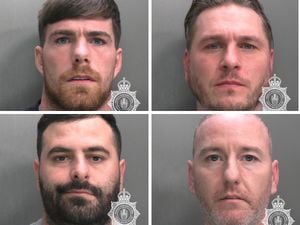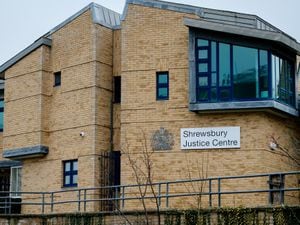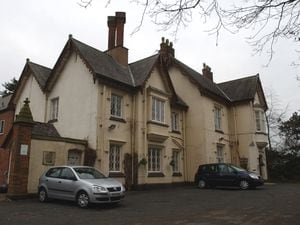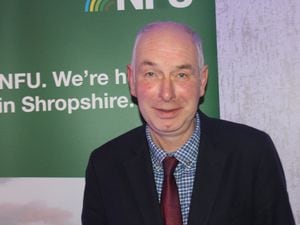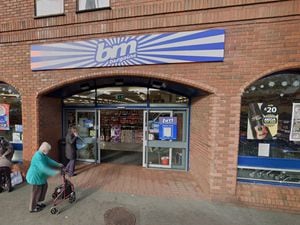Tickets please! Big Brother is on board
‘We can see the signs, the patterns of behaviour that we know lead to serious crime.’ These are the words of a security specialist in charge of keeping an eye on the CCTV on our buses.
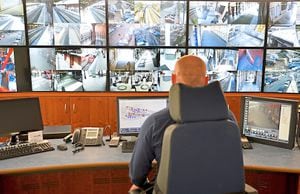
The new, Vemotion cameras are set along ‘hotspot’ routes in the West Midlands with the aim of identifying those committing crime and anti-social behaviour on board.
The technology has never been more pertinent, after a Smethwick man was stabbed to death on the top deck of a late-night bus in Birmingham at the end of January this year.
A total of 14 systems are set along a different bus route each month, with the Safer Travel Team, made up of West Midlands Police, British Transport Police and Transport for the West Midlands, hoping to get more cameras installed to help tackle the problems.
Crimes that have been prevented thanks to the new 4G systems range from anti-social behaviour, such as smoking and youths being disruptive to preventing incidents escalating into offences such as damage and assaults.
Criminals have also been identified, arrested and locked up put behind bars for serious offences after being caught by one of the 1,500 regular cameras installed in all National Express buses. Security manager Stephen Tighe is one of a team of around 60 at the command centre based on Summer Lane, Birmingham, who is on hand to cast an eagle eye over the cameras, which are some of 1,200 deployed across different transport routes across the West Midlands Combined Authority areas.
He said: “We are able to see people as they progress along certain routes. In terms of the buses, we can track them not only as they’re out along routes, but also in the stations. We can flick between cameras on the buses, to say, track someone getting off and follow them right through the station.
“We can also track people when they come through train stations, metro stations and other local authority areas. It means that we can follow potential offenders right through their journeys and stop them from committing offences. We can see the signs, the patterns of behaviour that we know lead to serious crime. Anything that we feel are unusual behaviours, we can zoom in on those people that we think are behaving oddly.
“Examples can be gangs of young people in a huddle on the back of a bus to an individual looking to avoid the cameras – behaviours like that.
“If we realise that someone we’re watching isn’t about to commit an offence, we immediately zoom out and leave them to their day – in that way, people’s privacy is very important too. We don’t follow people out of hand.”
Once an offender has been identified, the team let Safer Travel Police, who are also stationed in the same building, know what they have seen, and their staff are mobilised to follow it up.
PCSO Lindsay Bingham said: “The security staff show us on the big TV screens what they have seen and what route those offenders are on. We then use our specially-made tablets to find the bus and the camera and take that out with us in the patrol car. We will then locate and follow the bus before pulling ahead and flagging it down. After that point, it will be a case of either doing a ‘meet and greet’ which lets the people on the bus know that we are there for them and to reassure the driver, to actually warning or arresting individuals who are causing problems.” So far the installation of the new systems have been welcomed by the public as well as the police, leading to some arrests and an increase in people’s confidence on public transport.
Sgt Fergal Sharkey said: “The feedback we have had has been tremendously positive so far. We are always looking to review and improve the work that we do and every month we do look at the statistics to see where we can put the cameras next to help crack down on antisocial behaviour and crime on the buses.
“I would say to people who are perhaps concerned about the level of surveillance that takes place on public transport that it is a proven way of keeping people safe and making sure that they feel reassured and confident when travelling.
“Since the Safer Travel initiative began, there has been a 70 per cent reduction in offences taking place on public transport, and you can’t argue with that figure. We still have some way to go, but the more we can get our message out there and let people know we are there for them, the more likely it is we can tackle the problems.”
While at the centre, we are able to see a demonstration of how officers would deal with disruption on the 11C bus, which is Europe’s longest urban route at 27 miles and . The bus circumnavigating Birmingham. from Acocks Green, to Erdington, Perry Barr, Bearwood, Cotteridge and Kings Heath. Identified as a ‘hot spot’ route, the police are able to see what is going on in the buses along its journey.
In the demonstration of how the technology works, the Officers take us out on a patrol using the technology and in this staged scenario, we are told that schoolchildren are causing disruption on the bus at around 4pm. The officers, in a patrol car, use tablets and the National Express route tracker app to find and flag down the bus before speaking to the driver, passengers and the the children. find and follow the bus before flagging it down. pulling into a bus stop ahead of it. Flagging the bus down, the Officers greet the bus driver and speak to the passengers as well as the on both the upper and lower deck. The school children would then be spoken to by the officers and told to stop throwing paper.
Sgt Sharkey said: “We do a lot of work in schools to show youngsters how their unruly behaviour impacts on those around them. We go in to speak to those who we have identified as misbehaving and show them the footage. We point out the young mum in the corner looking upset or the elderly person who seems intimidated by them and as soon as they see that, they are shocked, and often very remorseful.
“In that way, the cameras do help people that are in some ways on the cusp of becoming offenders from going down that path, and that is what we are trying to do – prevent crime and anti-social behaviour from happening in the first place.
“If we can stop one person from pursuing a life of crime, protect others from being impacted by that and encourage people to use public transport in the process, then we’ve done our job.”

